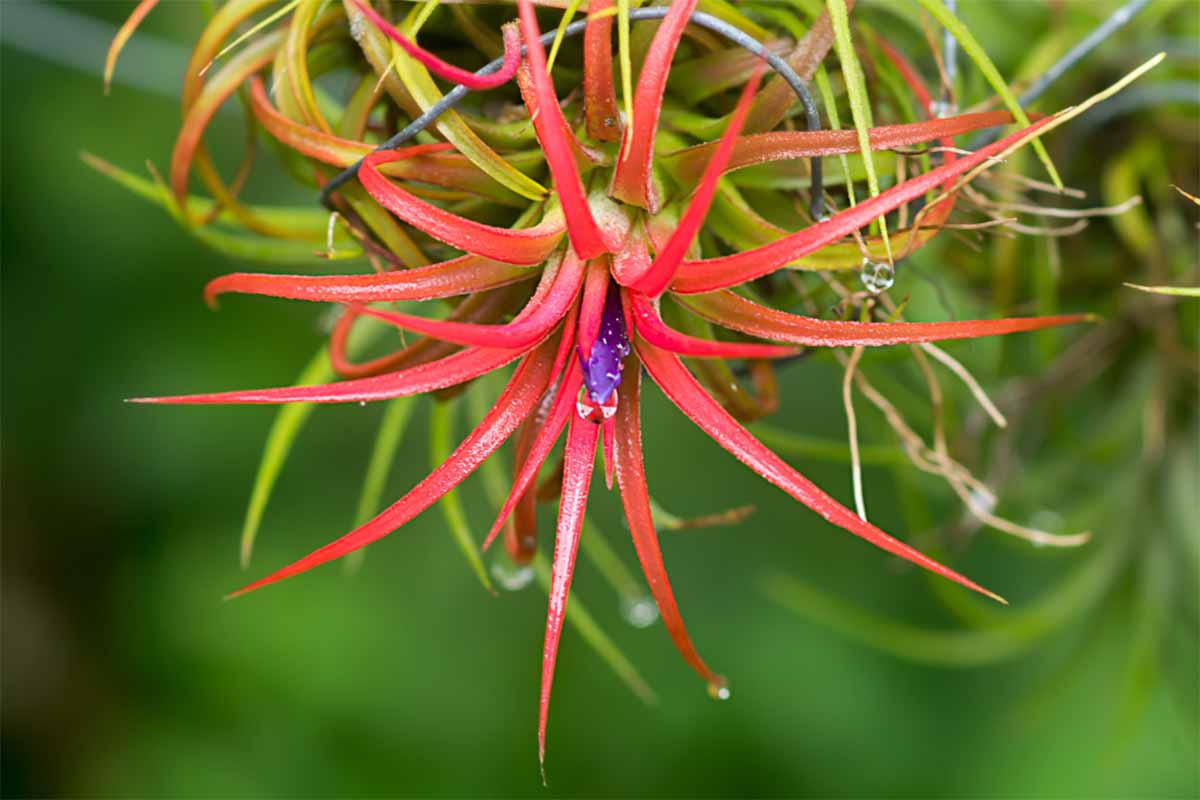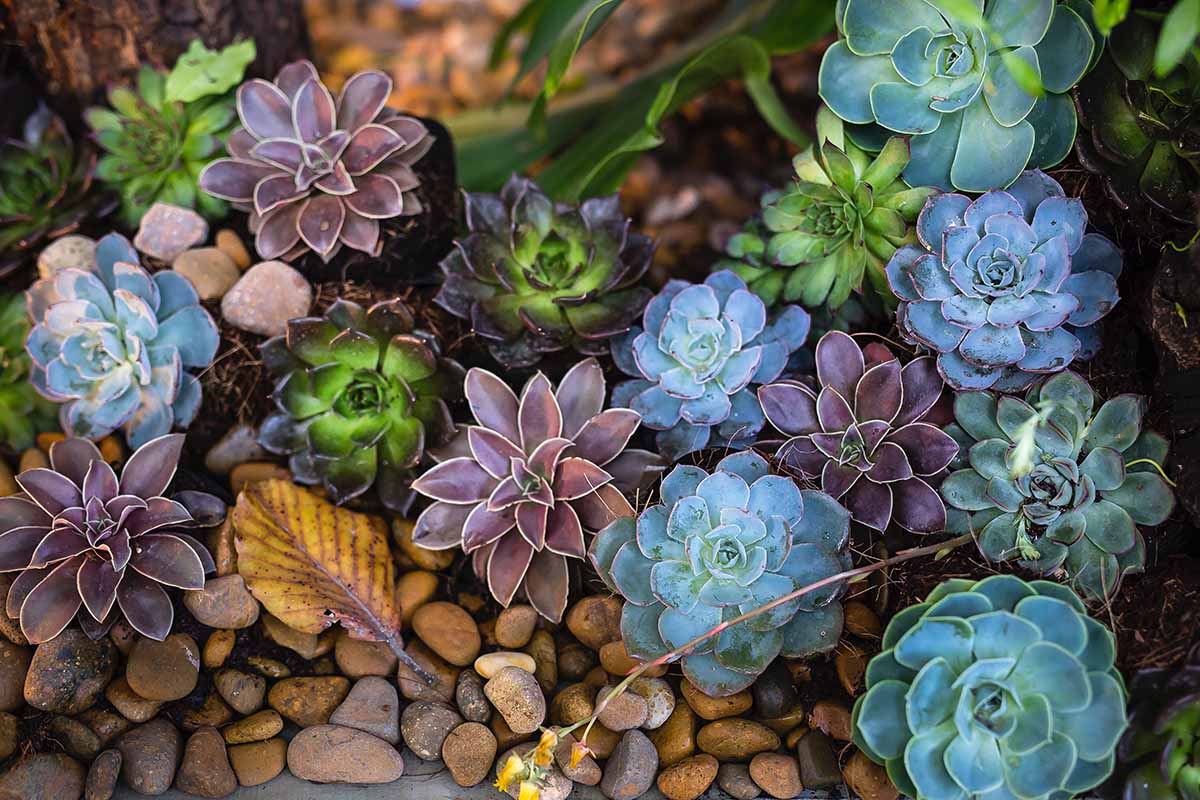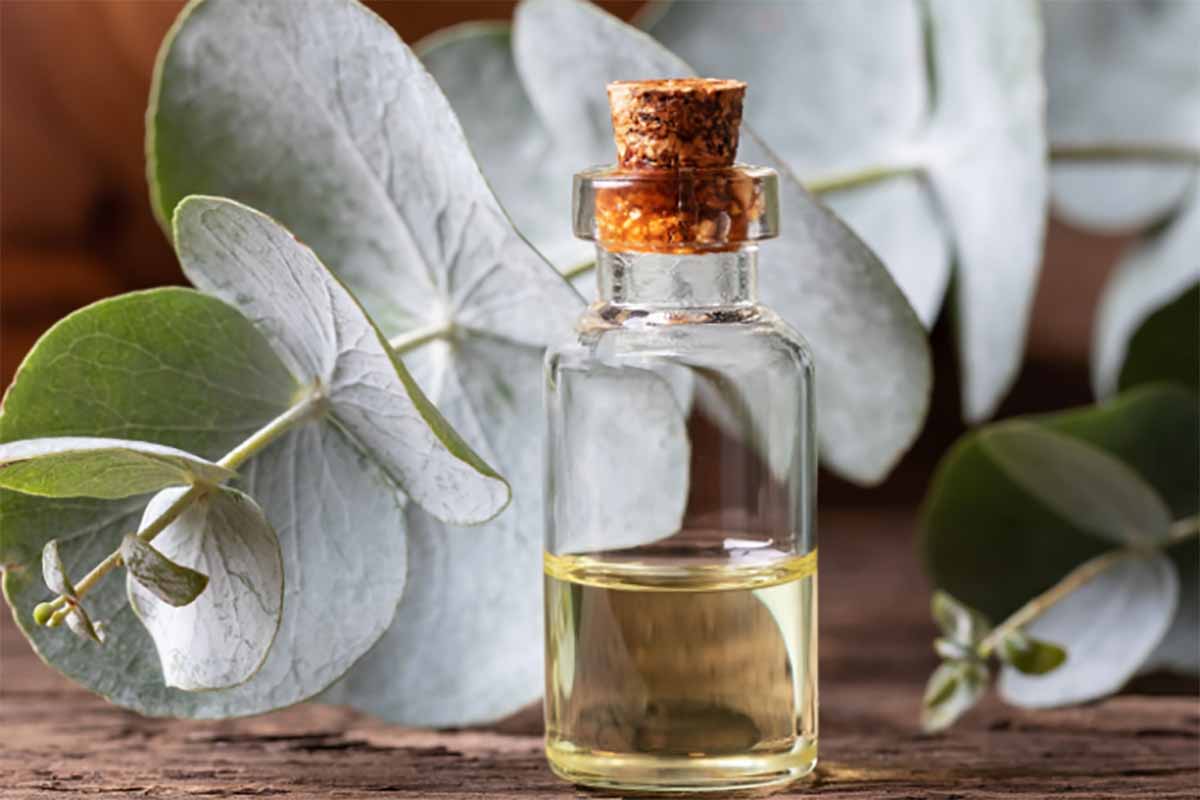Air Plant Basics

Like succulents, air plants are awesome sauce for those of us with black thumbs of death. Air plants kind of look like little green tarantulas, but they come in tons of amazing textures, colors, and blooms! Here are a few tips to keep yours from biting the dust.
Light
Air plants thrive in tropical regions so they’ve adapted to light that mimics sunlight that’s been filtered through tree canopies. Set your plants up near a window to ensure they get plenty of bright light. If you have an East facing window, that’s even better. If you normally have your plants in a low-light area, set them by the window for a day or two so they get their healthy dose of sunshine. Check out our Pinterest page for display ideas.
Water
As we said earlier, air plants are super low maintenance. They just need enough water to avoid getting crispy. There are two ways to water these cuties; misting and soaking. If you know you won’t have time to soak them, you can mist them a bit to ensure they’ll survive until their next bath. Soaking is the easiest method. Simply fill up the sink or a bowl and plop in your plants. Let them soak for around 15-30 minutes once a week. After soaking, gently shake off any excess water and you’re done.
That’s it! Stop by the Greenhouse to check out our air plant selection!
Death By Tomatoes

From salads to pizza, tomatoes are a popular ingredient in most cuisines. Native to the Americas, the tomato originated back to the early Aztecs around 700 A.D. It didn’t make its way to Europe until around the 16th century where it quickly became popular with the Southern Europeans. The British, on the other hand, believed the tomato was poisonous.
Tomatoes? Poisonous? Back in the 1500’s, dinnerware was make of pewter which contained a ton of lead. Foods that had a high acid content (i.e. tomatoes) caused the lead to leach out into the food which resulted in lead poisoning and, more often than not, death. Pretty interesting, no? The poor didn’t have any fancy plates and therefore had no issues whatsoever munching on tomatoes.
Thankfully, the tomato continued to grow in popularity and we now have oodles of varieties from heirloom to big ol’ beefsteak tomatoes. Stop on by the Greenhouse and pick up a few for your garden!
Succulent Solutions

Succulents are the perfect starter plant for a black thumb. They are fairly low-maintenance and it takes quite a few errors to kill them. Here are a few easy telltale signs that your succulent may be in trouble.
Leaning Towards Light
That plant on your desk is reaching towards the window like it’s in the front row of a George Strait concert. This is a common sign that it needs more sunlight. Scootch it on over so that it gets more rays.
Dull Color
This succulent actually needs less sun. Move it into a darker area of the room and watch it’s green deepen.
Rotting, Yellowing Leaves, and Black/Brown Spotting
These are all signs that you’re succulent is getting too much water. Succulents really only need a deep watering once a week.
Shriveled Leaves
Sunken in, wrinkly leaves are a sign that your plant is thirsty. Give that thing a good drink keep tabs on it to see make sure its leaves plump up. With succulents, the goal is fewer, deeper waterings. If the soil is dry, water it until the water comes from the bottom of the pot. If the container has good drainage, you can set the succulent in a tray to let the soil wick up the water for about five minutes. Remove the pot and let it drain.
Visit our blog for more plant tips and tricks!
Impatiens Care

Appropriately referred to as “Busy Lizzie”, impatiens propagate like crazy. Even the gentlest touch can cause a ripe impatiens seed pod to burst, scattering its seeds about. Available in a rainbow of colors, impatiens love shade and moisture. Here are a few tips to keep these beautiful blooms healthy and thriving.
Planting
After the last Spring frost, plant impatiens in a humus-rich, moist, and well-drained soil. Plant them in an area where they have a bit of shelter from the wind. Impatiens can grow up to 30 inches tall so plant them 8-12 inches apart to keep them low to the ground. When it comes to sun, some impatiens like more sun than others. Be sure to check the label.
Care
As we said, impatiens love moisture. Be sure to water them regularly, keeping them moist but not wet. If they get too much water, they could develop fungal diseases. If they start to lose their leaves, they need more water.
We have several varieties of beautiful impatiens here at the Greenhouse! Stop on by and pick some up.
DIY Thieves

Featuring a robust blend of clove, lemon, cinnamon bark, eucalyptus, and rosemary, Thieves smells like a Fall kitchen with pie baking in the oven. This stuff is great for making your own household cleaner, air freshener, and even breath spray. Make your own at home with this DIY recipe!
You’ll need:
- 10 drops clove oil
- 9 drops lemon oil
- 5 drops cinnamon bark oil
- 4 drops eucalyptus oil
- 3 drops rosemary oil
To make:
Combine oils and store in a dark glass bottle with an airtight cap. Store in a dark space as sunlight can reduce the quality of your oil.
For more fun reads, visit our blog!









